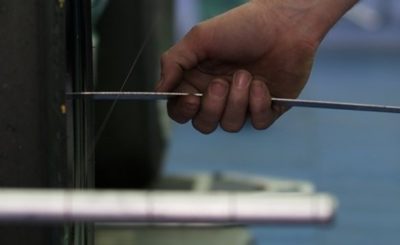One for the ages: A few simple tips and preparation can help autocross competitors and club racers get suspension alignment correct and adjust it quickly on the fly.
Somewhere in the principal suspension alignment adjustments of camber, toe and caster lies the near-perfect combination that will give a car the right union of quick times and long tire life, whether on the racetrack or autocross course. The trick is that combination varies from day to day and track to track. There are a few methods, though, that can help you achieve that in each circumstance, if you’re willing to commit to a little advance work and can find an alignment rack where you can spend the day turning wrenches to your heart’s content.
“Back when I was a wee bit younger and campaigning my RX-3 in Improved Touring, I had a friend that had a tire shop and an alignment rack,” says Ken Payne, Motorsports Technical Director for BFGoodrich® Tires. “We spent some time on the rack and set a nominal baseline camber setting, set the toe, and then made changes. We’d move the camber in half a degree and see how the toe changed. And I’d record every turn of the tie rod end nuts to adjust the toe back into specification and write that down. I built this little matrix of the settings of camber and toe and what I had to change without using any measurement tools – just the wrenches necessary to make the adjustment, and it allowed me at the track to make a quick change.”
The result of such an exercise is a driver knows exactly how to make an adjustment to get another eighth-inch of toe-out or a half degree of camber without breaking out the fishing wire and plumb bobs.
Knowing when those settings are right, beyond the feel and lap times, is part of the trick. Temperature is a great indicator of whether settings are correct or not. If the temperature readings across the tire –inside, center, outside – are consistent when the car comes off the track, chances are your settings are pretty close to correct, Payne says. If the inside shoulder is too hot, there’s probably too much camber; if the outside shoulder is hot, it usually means too little.
In an autocross situation, where temperatures are hard to measure due to both the limited time the tire has to heat up and the difficulty of measuring temperatures immediately after a run, the old shoe-polish-on-the-shoulder trick is a valid exercise to check camber and pressures, notes Payne. A dab on the outside shoulder of the tire will indicate how much the tire is rolling over; too much and more camber or pressure may be in order.
For the long term, wear is also a good indicator. Excessive wear on the inside of a tire after a weekend on a track with long straights might indicate too much toe-out. In the end, Payne explains, it’s all about optimizing the use of the contact patch. Doing so will both make the car quicker and extend tire life.


 ACCESSIBILITY
ACCESSIBILITY